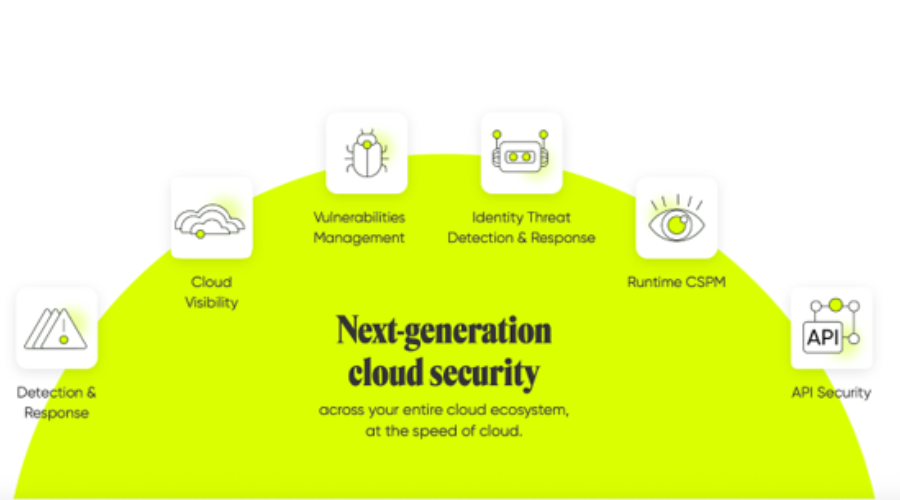JFrog, a pioneer in DevOps and continuous integration tools, offers a complete platform to manage binaries and secure the software supply chain. At the heart of its ecosystem are two powerful tools: JFrog Artifactory and JFrog Xray. Together, they manage software artifacts and embed security and compliance checks directly into the Software Development Life Cycle (SDLC).
Through JFrog Artifactory and JFrog Xray, development and security teams can track artifacts, detect vulnerabilities early, manage compliance obligations, and respond to threats fast.
This article covers 8 key capabilities of JFrog that help with security and compliance at every stage of the SDLC.
1. Artifact traceability for full visibility
JFrog Artifactory is a universal repository that stores extensive metadata for each artifact it holds. This includes building numbers, timestamps, commit information, and detailed dependency trees.
What makes this visibility so powerful is the ability to trace across the entire pipeline. A high-severity vulnerability is found in a widely used open-source library. With Artifactory, teams can instantly see which builds and applications are affected by that library, even if it was introduced transitively. This level of traceability is critical for incident response—to isolate the root cause, assess the extent of exposure, and formulate a fix as fast as possible.
Moreover, Artifactory’s integration with build tools like Maven, Gradle, and Docker ensures every component is tracked from compilation to deployment, and governance and auditing are cleaner.
2. Security scanning within CI/CD pipelines
JFrog Xray does this by scanning for security at the earliest stage of software delivery. Integrated into CI/CD pipelines, it scans binaries and containers as soon as they are built, so any vulnerabilities or compliance issues are flagged before the artifact moves downstream.
These scans check direct dependencies and traverse transitive dependencies where many modern threats reside. By scanning workflows using Jenkins, GitHub Actions, or GitLab, organizations can enforce security gates automatically, minimize manual intervention, and reduce risk without slowing development velocity.
This is the principle of “shifting left,” integrating security where it’s fastest, cheapest, and most effective to act.
3. Flexible policy creation and real-time watches
Security teams need more than just vulnerability data; they need control. Xray provides this control through customizable security and license policies. These policies allow users to define thresholds and actions based on severity scores, vulnerability types, or license categories.
Watches extend these policies to specific targets, such as builds, repositories, or selected folders. This was only relevant policies applied where needed, no alert fatigue, and strict oversight.
For example, an organization might define a policy to block any component with a known CVE above 8.0 and apply that policy to all production-bound Docker images. Another team might create a separate policy for license compliance, flag any artifact that introduces restrictive licenses like AGPL into the ecosystem.
By combining policies with watches, JFrog delivers targeted, real-time compliance enforcement that is easy to manage and adapt as organizational needs evolve.
4. Fast detection and contextual notifications
When a policy is broken due to a security issue or license concern, JFrog Xray sends immediate, context-rich notifications. These notifications include actionable reports that tell teams exactly what went wrong, where, and why.
Notification channels can be set up to your existing infrastructure. Xray can send emails, push to Slack, or integrate via webhooks to ticketing tools like Jira. For those with more complex environments, REST APIs allow deeper integration into custom dashboards or incident response systems.
Most importantly, the notifications are not limited to new builds. Xray will trigger notifications if a new vulnerability is found in an existing component. This ensures previously “clean” artifacts are still under surveillance security throughout their lifecycle.
5. Managing violations and guiding remediation
JFrog has a centralized dashboard for violation management to help teams categorize, investigate, and prioritize responses.
Each violation entry includes a detailed breakdown of the issue, affected components, severity level, and guidance on how to fix it. This includes identifying safer version alternatives, understanding exploitability, and reviewing dependencies.
For accepted risks like CVEs with no known exploit, teams can suppress the violation temporarily while documenting the rationale, creating a compliant exception workflow.
This centralized approach enables cross-functional collaboration. Developers, DevOps, and security teams can work from the same source of truth, reducing the mean time to repair (MTTR) for each issue.
6. License compliance at scale
Beyond security vulnerabilities, open-source license management is a growing concern for enterprises. Violating license terms can lead to legal risks, intellectual property conflicts, or even forced retractions of software releases.
X-ray helps by automatically scanning artifacts for their license types. It compares these against your organization’s policies to identify unacceptable or risky licenses like GPL or AGPL and block them from progressing.
This scanning includes direct and transitive components, so no hidden license dependencies slip through. For global teams operating under different jurisdictional rules, Xray’s license management is a must-have for software integrity and legal compliance.
7. Compliance-ready auditing and historical insights
Audits require detailed answers about when vulnerabilities were introduced, who approved exceptions, and which builds were impacted. JFrog has audited ready logging and reporting. Every action, policy application, scan result, remediation, and exception is recorded immutably. This history allows security leaders to generate clear reports that meet internal governance and external regulatory requirements.
Compliance teams can pull data to show proactive monitoring, document timely responses, and show continuous improvement over time. The platform’s reporting also supports common frameworks like ISO 27001, SOC 2, and GDPR by providing evidence of secure development practices.
8. Security as a software supply chain enabler
DevSecOps is about making tradeoffs between velocity and security through integrated, automated, and intelligent tooling.
JFrog provides that enablement by securing every artifact, enforcing policies in real-time, and guiding teams to quick and compliant resolution. Our unified platform bridges the gap between development speed and governance needs, so secure software delivery is the norm, not the exception.
For companies looking to scale software delivery without taking on security debt, JFrog has a solution that is both technically rigorous and operationally agile.







